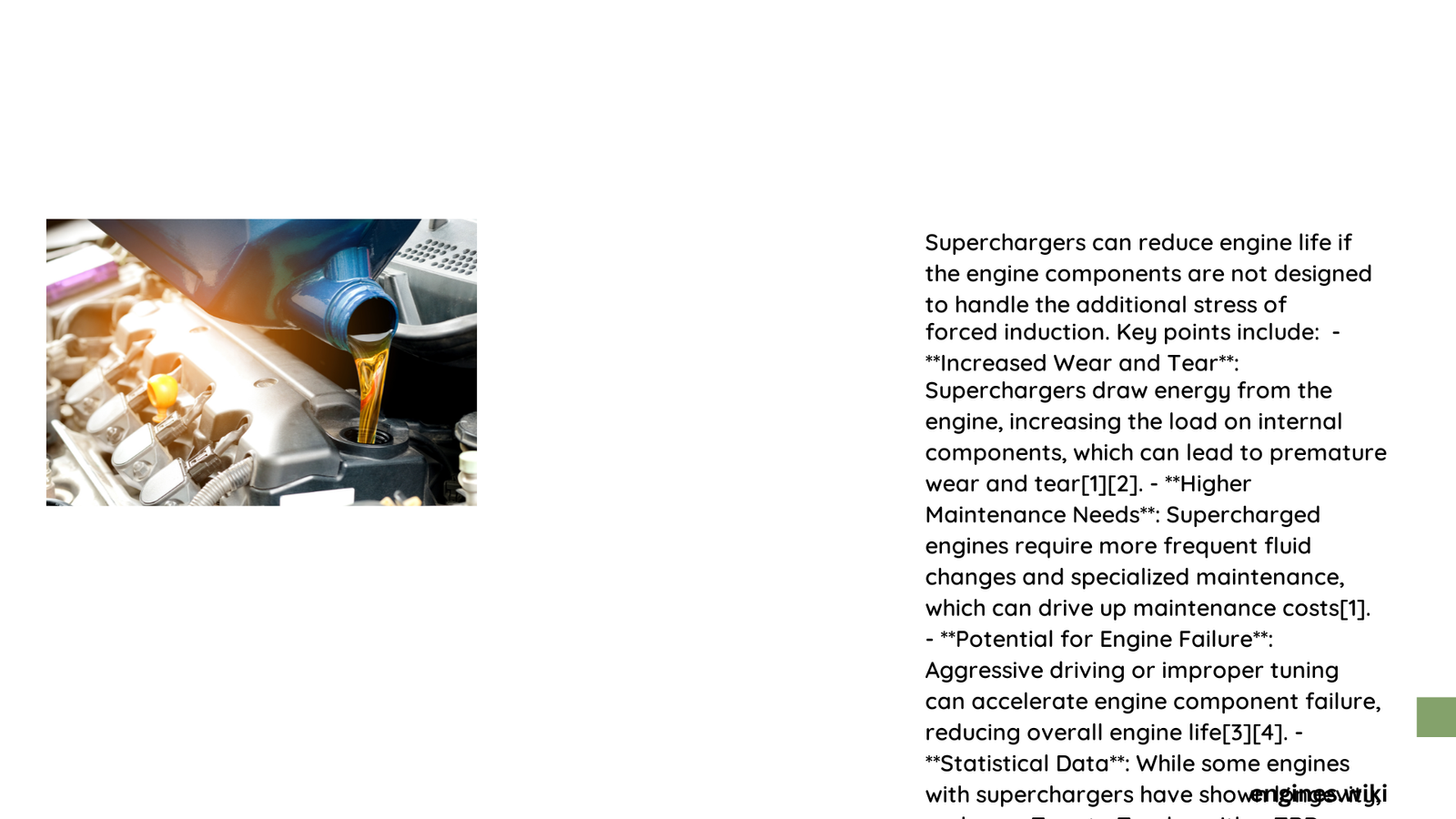Superchargers represent a powerful performance enhancement technology that inevitably introduces additional mechanical stress to an engine’s components. While they dramatically increase horsepower and torque, the increased thermal and mechanical loads can potentially accelerate wear rates, potentially reducing overall engine lifespan if not properly managed through meticulous maintenance and strategic implementation.
What Happens When Superchargers Stress Engine Components?
Supercharging fundamentally transforms an engine’s operational dynamics by forcing more air into combustion chambers, creating higher pressures and temperatures. This aggressive performance enhancement comes with inherent mechanical consequences that can impact long-term engine durability.
How Do Superchargers Increase Mechanical Stress?
- Pressure Amplification
- Boost pressures typically range from 6-12 PSI
-
Higher pressures create exponential stress on:
- Pistons
- Connecting rods
- Crankshaft bearings
- Cylinder walls
-
Thermal Management Challenges
- Increased air compression generates significant heat
- Temperature rises can reach 300-400°F
- Potential consequences include:
- Accelerated metal fatigue
- Increased lubrication breakdown
- Potential gasket and seal degradation
What Maintenance Strategies Mitigate Supercharger-Induced Wear?
| Maintenance Area | Recommended Interval | Critical Actions |
|---|---|---|
| Oil Changes | Every 3,000-5,000 miles | Use high-performance synthetic oils |
| Belt Inspection | Every 15,000 miles | Check tension and wear patterns |
| Coolant System | Annually | Verify proper fluid levels and quality |
| Air Intake | Every 10,000 miles | Clean/replace filters |
Can Engine Design Counteract Supercharger Stress?
Modern engines increasingly incorporate design features to manage enhanced performance loads:
- Forged internals
- Advanced metallurgy
- Improved cooling systems
- Precision-engineered components
What Factors Determine Supercharger Impact on Engine Life?
Critical variables influencing potential engine wear include:
- Boost pressure levels
- Driving habits
- Maintenance frequency
- Original engine build quality
- Supercharger installation precision
Practical Recommendations for Supercharger Owners

- Select High-Quality Components
- Choose reputable supercharger brands
- Ensure professional installation
-
Match supercharger to engine specifications
-
Implement Rigorous Maintenance
- Follow manufacturer’s recommended service intervals
- Use premium lubricants
-
Monitor engine performance metrics
-
Understand Performance Limitations
- Recognize your engine’s inherent stress tolerance
- Avoid continuous maximum boost operation
- Consider periodic professional inspections
Conclusion: Balanced Performance and Longevity
While superchargers can potentially reduce engine life if improperly managed, strategic implementation and meticulous maintenance can mitigate most risks. The key lies in understanding your specific vehicle’s capabilities and maintaining a proactive approach to performance enhancement.
Pro Tip: Consult automotive performance specialists who can provide personalized guidance tailored to your specific engine and performance goals.
